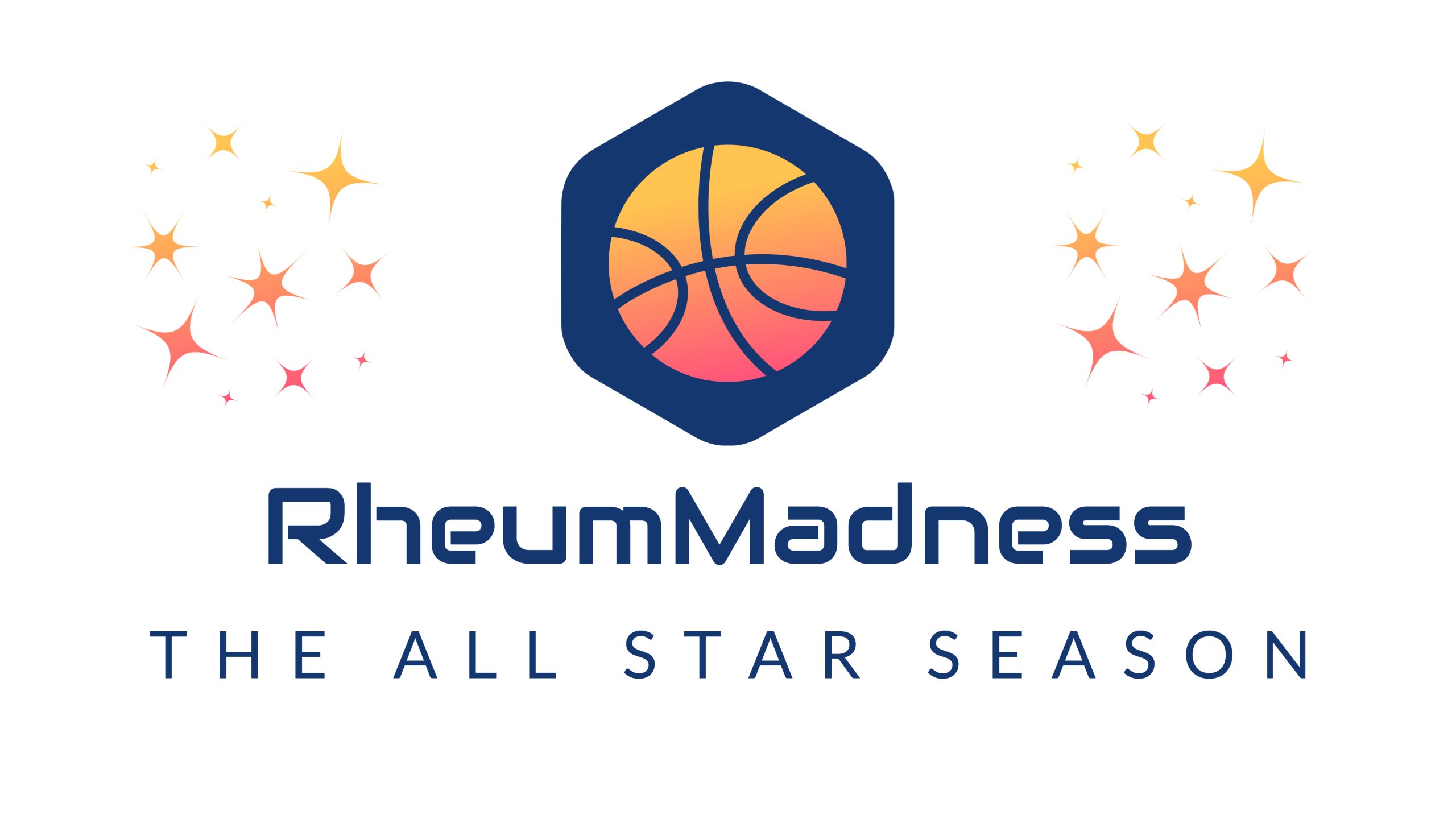Team: BeSt, aka “The BeSt Rheumatology Study”
Region: RA Revamp
Authors: Medical University of South Carolina Rheumatology Fellowship. Jake Altier, MD, 1st Year Fellow, M; Lauren Berry, MD, 1st Year Fellow; Sean Carter, MD, 2nd Year Fellow; Bradley Collins, DO, 2nd Year Fellow; Jessica English, MD, 2nd Year Fellow; Rachael Werner, MD-PhD, 1st Year Fellow; Faye Hant, DO, MSCR, Professor of Medicine
Team Overview
Our team truly deserves to be named BeSt in Bracket! Prior to the BeSt study, there had been evidence that early more aggressive treatment of Rheumatoid Arthritis (RA) was likely superior to prior, more defensive based strategies. It was not known yet, however, which “offensive” aka preventative strategy in early disease was best. Combination therapy and use of biologics had been shown to slow progression of joint damage more than DMARD monotherapy. It is in the BeST study, our all-star pick, that this was better clarified as this multicenter randomized control trial compared clinical and radiographic outcomes of 4 different treatment strategies to evaluate the optimal strategy for preventing long term joint damage and functional decline in rheumatoid arthritis.
508 patients from the Netherlands with early rheumatoid arthritis (defined by the 1987 ACR criteria – duration of 2 years or less, age over 18, and active disease with 6+ swollen joints, 6+ tender joints, and either ESR >28mm/hour or global health score greater than 20) were allocated to 1 of 4 treatment strategies: sequential disease-modifying antirheumatic drug monotherapy (group 1), step-up combination therapy starting with methotrexate and adding other conventional DMARDs if insufficient (group 2), initial combination therapy of methotrexate and sulfasalazine with tapered high-dose prednisone (group 3), and initial combination therapy methotrexate with the tumor necrosis factor antagonist, infliximab (group 4). Treatment adjustments were made every 3 months based on DAS44. If low disease activity (of £ 2.4) was not reached, therapy would be adjusted per the pre-determined treatment protocol. Results after intention to treat analysis showed that initial combination therapy (methotrexate and sulfasalazine) with prednisone (Group 3) or methotrexate and infliximab (Group 4) resulted in earlier functional improvement and less radiographic damage after 1 year than either (Group 1) sequential monotherapy or (Group 2) step-up combination therapy. A fast break down the court as opposed to a leisurely pass inbound may clearly be the best offensive strategy against the hard pressing disease that is erosive rheumatoid arthritis.
Impact on Rheumatology
Besides being the BeST trial, our trial made waves in the field of rheumatology by proving that the best defense against joint damage is often an aggressive offense. Our study changed the way providers treat rheumatoid arthritis by showing improvement in patient functionality and reduced joint damage radiographically with initiation of combinations of multiple csDMARDs or TNFi +csDMARD therapy at diagnosis and highlights the importance of having a treat to target gameplan. This strategy opposed the slow titration of monotherapy approach used for RA at the time. Not only did the BeST trial revolutionize treatment for providers, but it also had huge implications for patient care by inhibiting joint damage progression without jeopardizing patient safety. The importance of the BeSt trial in our field cannot be outdone – it trailblazed and transformed the approach to early RA treatment.
Chances in the Tournament
The BeST Study opens the tournament against the Ticora trial in Rheumatoid Arthritis. Both teams came into play around the same time with the goal of hitting hoops hard and early from the start of the game. The BeSt study, as the name implies, was called into play to assess clinical and radiographic outcomes of various treatment strategies. The TiCora trial, on the other hand, passed up on some star players, like infliximab, the team captain of the BeSt study, with a similar plan of action in mind – looking at a stepwise approach in training to target objective measures.
The BeSt Study’s future in the tournament lies within its team captain, Infliximab, which the TiCora trial could not recruit in time. Having Infliximab’s skills and participation set our team apart from the TiCora Trial and helps unite and enhance our scoring ability. The TiCora study may try to undermine and break up our defense, but they likely overlooked that we also applied interval retraining and practice with optimization of treatment strategies based on objective data, similar to a ”treat to target” approach, one could say. While there is not a clear training strategy that the BeSt Study recommends, our focus has been a cohesive and early interdisciplinary training with emphasis on treating to a target, which remains the foundational pillar in the offense against all rheumatic conditions.
Next scouting report: TICORA Trial
Back to the full list of scouting reports.
See the Q&A on theMednet.org for the RA Revamp Region: What target do you utilize in clinical practice for defining disease remission in RA?
References
- Goekoop-Ruiterman YP, de Vries-Bouwstra JK, Allaart CF, et al. Clinical and radiographic outcomes of four different treatment strategies in patients with early rheumatoid arthritis (the BeSt study): a randomized, controlled trial. Arthritis Rheum. 2005;52(11):3381-3390. doi:10.1002/art.21405
- Grigor C, Capell H, Stirling A, McMahon AD, Lock P, Vallance R, Kincaid W, Porter D. Effect of a treatment strategy of tight control for rheumatoid arthritis (the TICORA study): a single-blind randomised controlled trial. Lancet. 2004 Jul 17-23;364(9430):263-9. doi: 10.1016/S0140-6736(04)16676-2. PMID: 15262104.



















